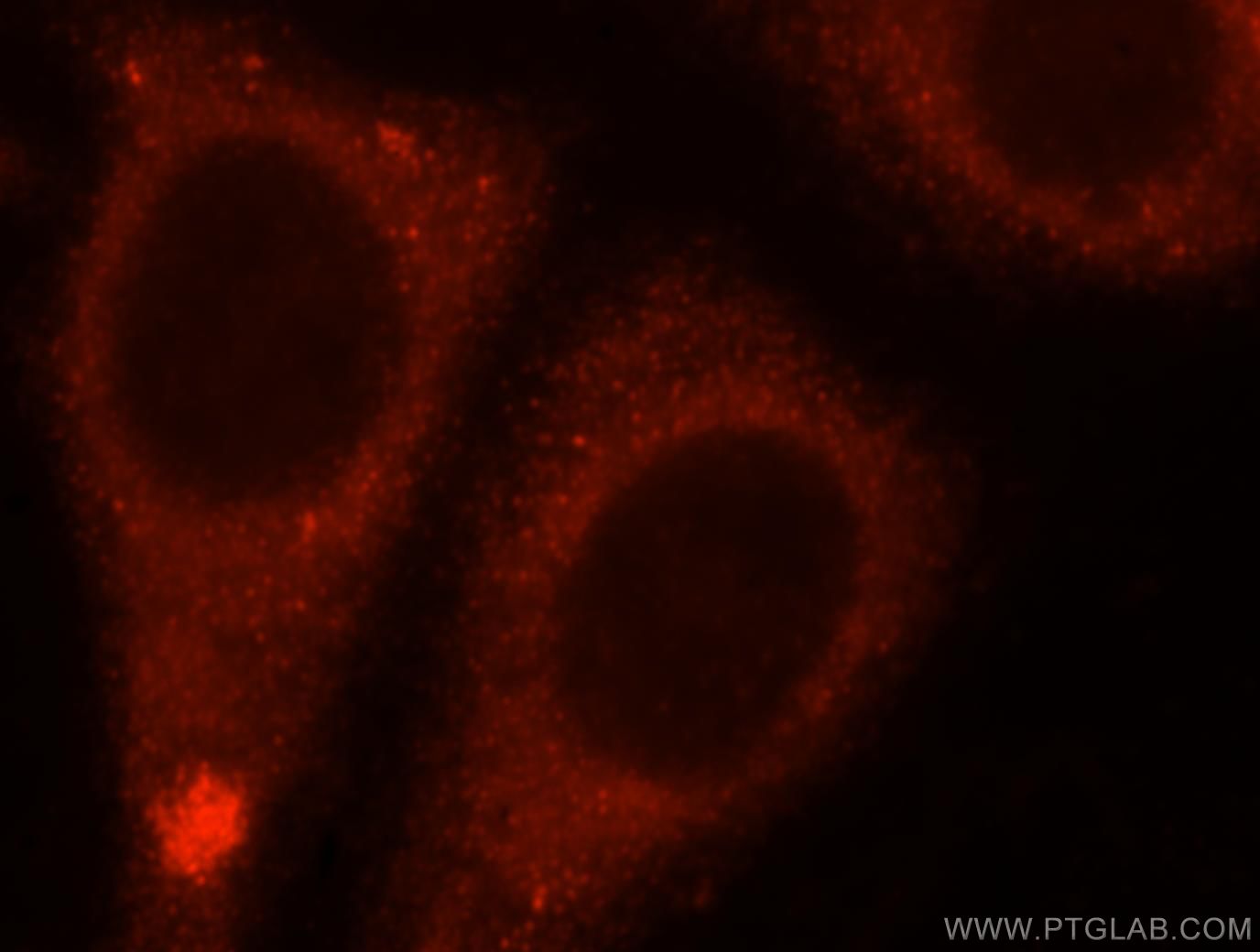验证数据展示
经过测试的应用
| Positive IF/ICC detected in | HepG2 cells |
推荐稀释比
| 应用 | 推荐稀释比 |
|---|---|
| Immunofluorescence (IF)/ICC | IF/ICC : 1:10-1:100 |
| It is recommended that this reagent should be titrated in each testing system to obtain optimal results. | |
| Sample-dependent, Check data in validation data gallery. | |
发表文章中的应用
| IF | See 1 publications below |
| FC | See 1 publications below |
产品信息
17655-1-AP targets ENPEP in IF/ICC, ELISA applications and shows reactivity with human samples.
| 经测试应用 | IF/ICC, ELISA Application Description |
| 文献引用应用 | IF |
| 经测试反应性 | human |
| 文献引用反应性 | mouse, rat |
| 免疫原 | ENPEP fusion protein Ag11903 种属同源性预测 |
| 宿主/亚型 | Rabbit / IgG |
| 抗体类别 | Polyclonal |
| 产品类型 | Antibody |
| 全称 | glutamyl aminopeptidase (aminopeptidase A) |
| 别名 | Aminopeptidase A, AP A, APA, CD249, Differentiation antigen gp160, EAP, ENPEP, Glutamyl aminopeptidase, gp160 |
| 计算分子量 | 957 aa, 109 kDa |
| GenBank蛋白编号 | BC094770 |
| 基因名称 | ENPEP |
| Gene ID (NCBI) | 2028 |
| RRID | AB_2099487 |
| 偶联类型 | Unconjugated |
| 形式 | Liquid |
| 纯化方式 | Antigen affinity purification |
| UNIPROT ID | Q07075 |
| 储存缓冲液 | PBS with 0.02% sodium azide and 50% glycerol , pH 7.3 |
| 储存条件 | Store at -20°C. Stable for one year after shipment. Aliquoting is unnecessary for -20oC storage. |
实验方案
| Product Specific Protocols | |
|---|---|
| IF protocol for ENPEP antibody 17655-1-AP | Download protocol |
| FC protocol for ENPEP antibody 17655-1-AP | Download protocol |
| Standard Protocols | |
|---|---|
| Click here to view our Standard Protocols |
发表文章
| Species | Application | Title |
|---|---|---|
Small Engineering of the fluorescent-energy-conversion arm of phi29 DNA packaging motor for single-molecule studies. | ||
Cell Rep Spatiotemporal dynamics of inner ear sensory and non-sensory cells revealed by single-cell transcriptomics. | ||
Adv Sci (Weinh) 3-D Sustained-Release Culture Carrier Alleviates Rat Intervertebral Disc Degeneration by Targeting STING in Transplanted Skeletal Stem Cells |
